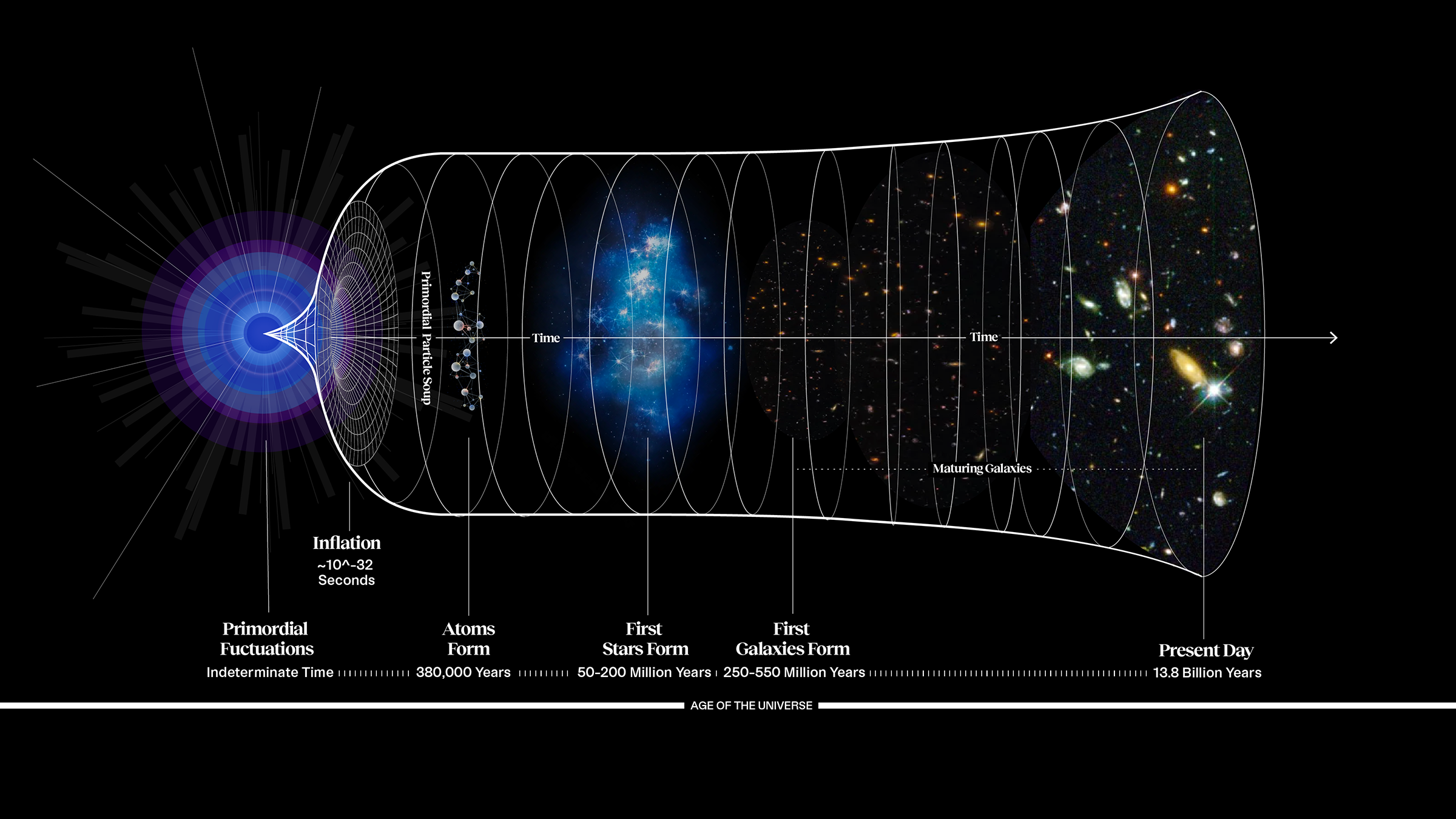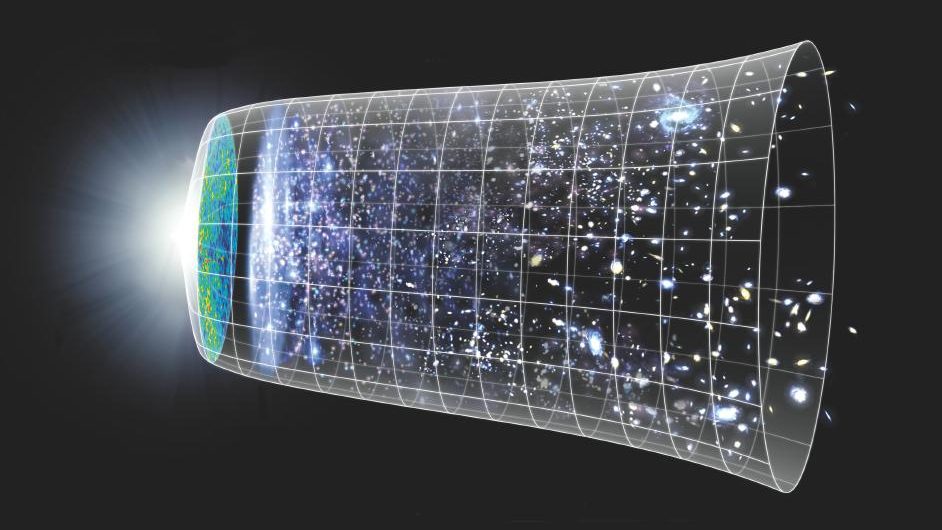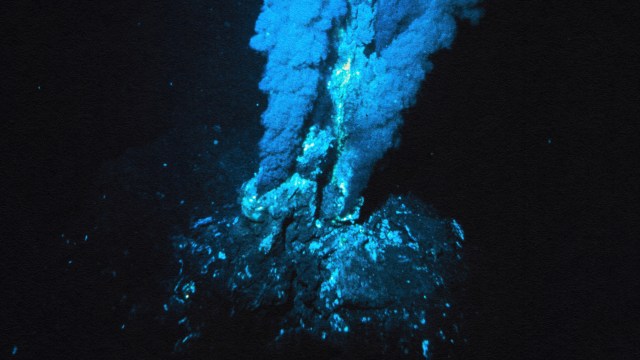The “Big Bang” turns 75, thanks to its greatest opponent

- Back in the 1920s, both theoretical predictions and observational data indicated that the Universe was expanding, but what would that imply for our cosmic origins?
- One idea was that if the Universe was expanding, diluting, and cooling today, then in the past, it must have been smaller, denser, and hotter, leading to the idea of a hot, dense, uniform early state.
- Coined in 1949 by the idea’s biggest detractor, Fred Hoyle, the name “Big Bang” has stuck ever since, and has been spectacularly validated and even superseded and improved upon. Here’s where we are today.
One of the greatest, most profound questions ever asked by humanity is simply, “Where did all this come from?” For thousands of years, you were likely only to get a speculative myth as your answer, as this was regarded as a question for philosophers, theologians, or poets: a question far beyond the reach of any sort of scientific endeavor. All of this changed in the 20th century, when advances in theory, observation, measurement, and instrument technology led us to a definitive answer for the first time: a hot, dense, largely uniform, and rapidly expanding state known as the Big Bang.
While the idea grew out of seeds that were planted in the 1920s and further developed throughout the 1940s, the name itself — Big Bang — was coined neither by someone who worked on developing that theory nor by someone who discovered a key piece of evidence supporting it, but instead by perhaps its greatest scientific detractor: British scientist Fred Hoyle. Hoyle, a frequent guest on BBC radio throughout his life, simply refused to believe that the idea of the Universe having an origin at a single moment in time was anything other than a preposterous creation myth itself. But in science, unlike any other discipline, it is not:
- popular opinion,
- the decree of an authority figure,
- or intuition or sensibility,
that determines what is true; it’s the evidence provided by the Universe itself. Here’s the story of the Big Bang, and its current status a full 75 years after its name originated.

Back in the 1910s and 1920s, two developments set the stage for the later emergence of what would come to be known as the Big Bang. One of those was purely theoretical: when, in 1915, Einstein put forth his daring new theory of gravity, general relativity. Instead of gravity being an invisible force, acting instantly across whatever great distance separated any two masses in the Universe, Einstein conceived of gravity as a geometric construct. In Einstein’s picture, spacetime itself behaved as a fabric, where that fabric’s shape, curvature, and evolution was determined by the presence and distribution of all the matter and energy within it. If you could provide the ingredients to the Universe, Einstein’s equations would tell you what its gravitational properties and behavior was.
The other was observational, and highly disputed: over the nature of the faint, fuzzy, spiral, and elliptical objects present in the night sky. Thought by many to be protostars — i.e., stellar systems still in the process of forming — two very strong pieces of evidence suggested otherwise.
- First, in the 1910s, Vesto Slipher measured how fast these objects were moving relative to us, and found something surprising: they were the fastest objects seen, moving at hundreds or even thousands of km/s relative to us, with nearly all of them receding from us.
- And then, starting in 1923, Edwin Hubble started measuring individual stars within those objects, demonstrating that they weren’t just galaxies (or “island Universes” as they were then called) all unto themselves, but that they were at great distances: typically millions of light-years away.
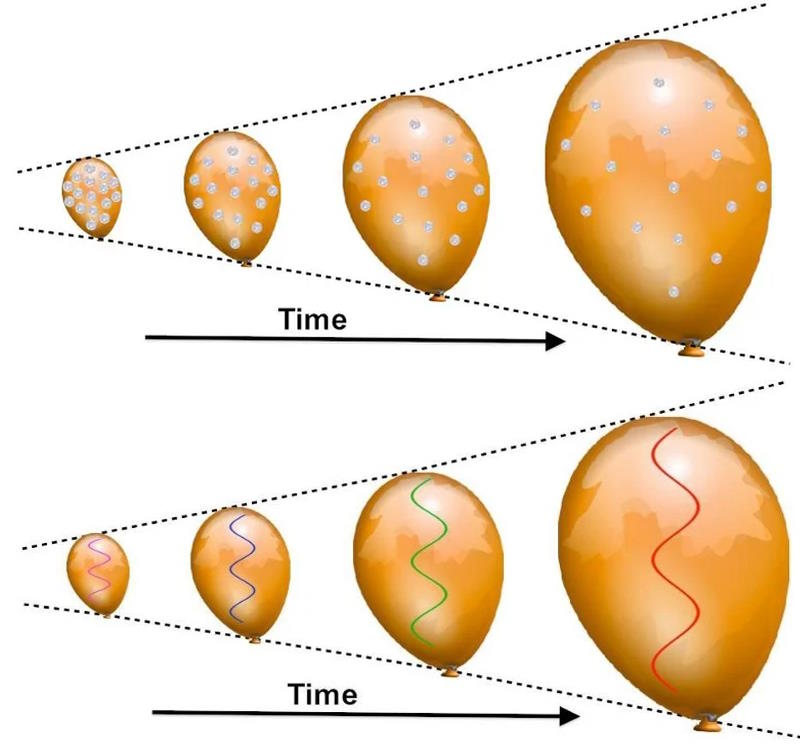
This marked the birth of a major revelation: our Universe, contrary to all expectations, was not static, but rather was expanding. Although it was a surprise to many, including Einstein, it was exactly in line with what the theory of general relativity predicted. If you take spacetime and fill it, uniformly (or almost uniformly) with any form of matter-and/or-energy that you like, it absolutely cannot remain static and stable. Instead, it will evolve by either expanding or contracting, with the rate of expansion or contraction determined by the total energy density of all the different forms of matter-and-energy within it. This was first shown by Soviet scientist Alexander Friedmann way back in 1922.
The very first person to put these pieces together wasn’t just a scientist, but also a Catholic priest: Georges Lemaître. In 1927, he put the theoretical work of Alexander Friedmann together with the observational work of Slipher and Hubble, and came to a series of spectacular conclusions. Galaxies were observed to recede from us, he reasoned, because the Universe was expanding, and therefore getting less dense over time. This implies that in the past, the Universe was smaller and denser, and if we can extrapolate all the way back to an infinitely small and infinitely dense state, we’d arrive at its true origin: what Lemaître hypothesized as “the primeval atom.”
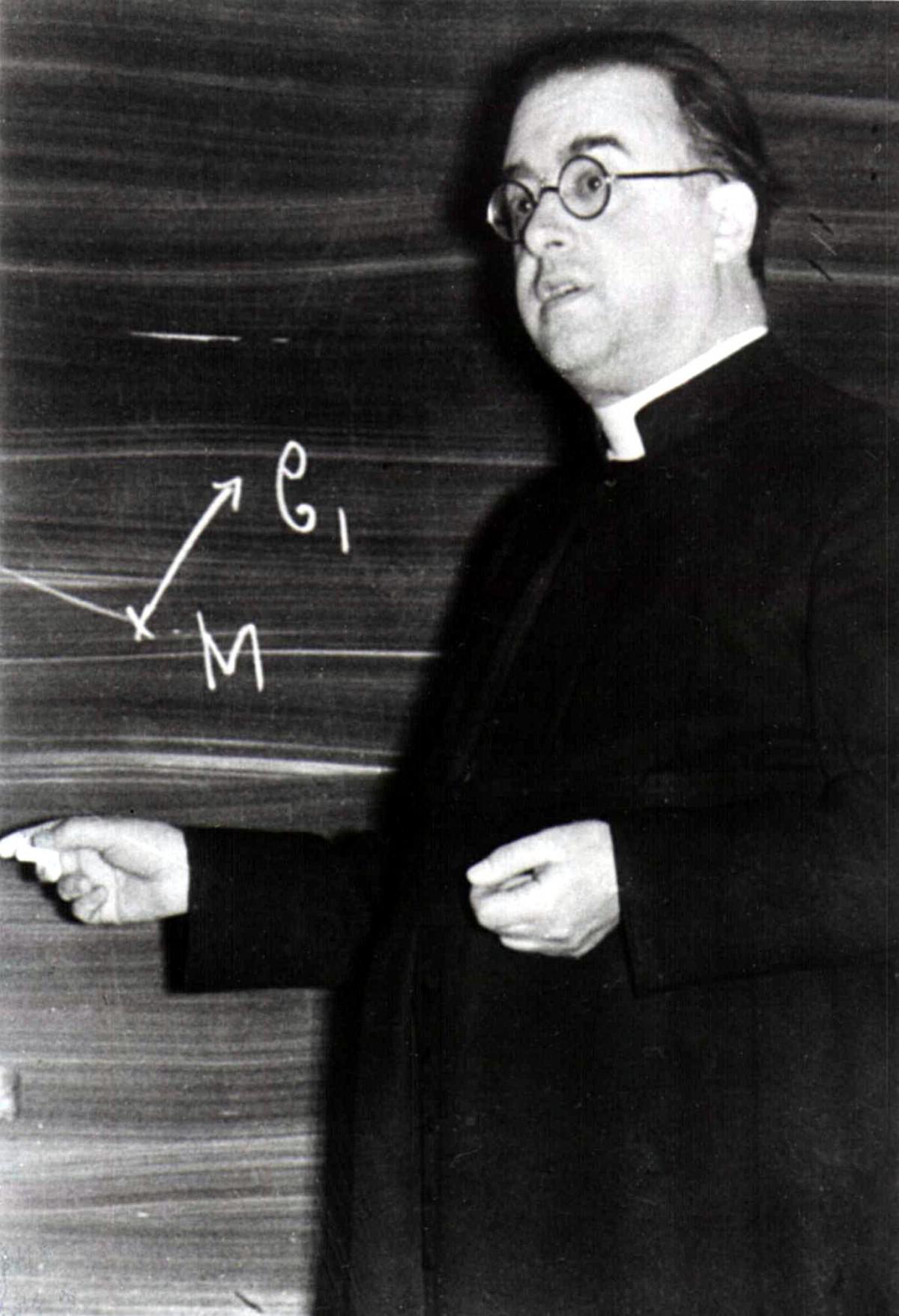
Of course, this idea wasn’t the only plausible explanation for the expanding Universe; many others arose, including the notions of tired light, the idea of an empty Universe, and the possibility of a steady-state Universe. This last one was exceedingly popular among scientists, as observations quickly began to reveal that the Universe was both isotropic (the same in all directions) and homogeneous (the same in all locations) if you averaged out the density across large enough volumes of space. If the Universe was the same everywhere in space, then might it also be the same everywhere in time as well?
That idea, known as the perfect cosmological principle, was set forth in the late 1940s by Fred Hoyle, Hermann Bondi, and Tommy Gold, and became one of the central pillars of the steady-state theory. The other main idea was put forth by George Gamow, a former student of Friedmann, who further developed a number of aspects of the idea of the primeval atom. First in 1945, and later in greater detail in 1948, along with Ralph Alpher and (to make the “Alpher, Bethe, Gamow” pun) Hans Bethe, Gamow was able to argue for this “primeval atom” origin to our Universe not through philosophical or logical arguments, but by making a set of novel predictions that could then be tested observationally.
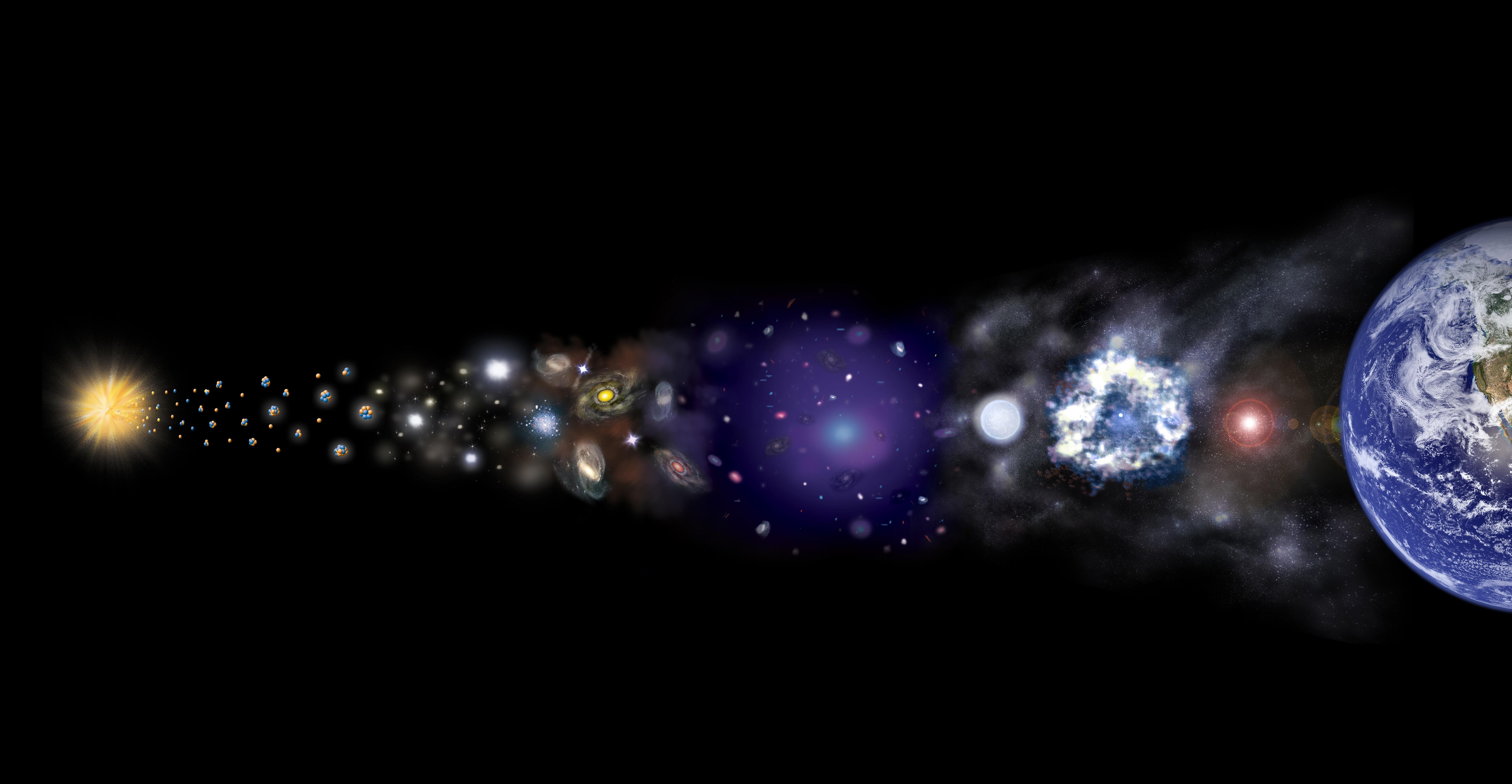
This is the key aspect of a scientific theory, by the way: to become accepted, it isn’t enough to simply explain what’s already been observed. You have to go out and make novel predictions — predictions that have yet to be tested — where your own theory’s predictions differ from the alternatives that are out there. While many ideas could have been plausible explanations within the context of the expanding Universe, Gamow’s work led to three important predictions.
- Development of structure: today, we see galaxies that are massive, evolved, and with a mix of young-and-old stars inside. Earlier, if the Universe began from a hotter, denser, more uniform state, we’d expect to see less-massive, less-evolved, but more numerous galaxies earlier on, with greater number densities and with primarily younger stellar populations inside.
- Radiation background: if the Universe was hotter in the past, at one point it would have been so hot that neutral atoms couldn’t have formed. When things cool enough that this ionized plasma can finally form neutral atoms, a bath of radiation should be released, persisting until the present day and coming from all directions equally, but having further cooled due to the expanding Universe to be just a few kelvin above absolute zero.
- Elements beyond hydrogen: at even hotter temperatures in the past, the formation of stable atomic nuclei would have been impossible, as high-enough energy radiation would have blasted any bound nucleus made of protons and neutrons apart. As soon as the Universe cools below that threshold, heavy elements will rapidly begin forming in a process known as Big Bang nucleosynthesis. Perhaps a substantial fraction of the heavy elements we see today arise from that event.

In contrast, Hoyle’s preferred cosmology, the steady-state hypothesis, predicted some very different outcomes. Structure would be constant across cosmic time, with galaxies appearing with the same properties at all distances and locations with respect to modern galaxies. There would be no background radiation to the Universe, only the diffuse glow of starlight reflected off of gas and dust. And there would be heavy elements present in the Universe, but all of them would have been forged within the interiors of stars, rather than anything beyond hydrogen arising from an early, hot, dense period in the Universe’s distant past.
Hoyle, in a radio address in 1949, first coined the term Big Bang, stating:
“We now come to the question of applying the observational tests to earlier theories. These theories were based on the hypothesis that all the matter in the universe was created in one Big Bang at a particular time in the remote past. It now turns out that, in some respect or other, all such theories are in conflict with the observational requirements, and to a degree that can hardly be ignored. Investigators of this problem are like a party of mountaineers attempting an unclimbed peak. Previously it had seemed as if the main difficulty was to decide between a number of routes, all of which seemed promising lines of ascent. But now we find that each of these routes peters out in seemingly hopeless precipices. A new way must be found.”
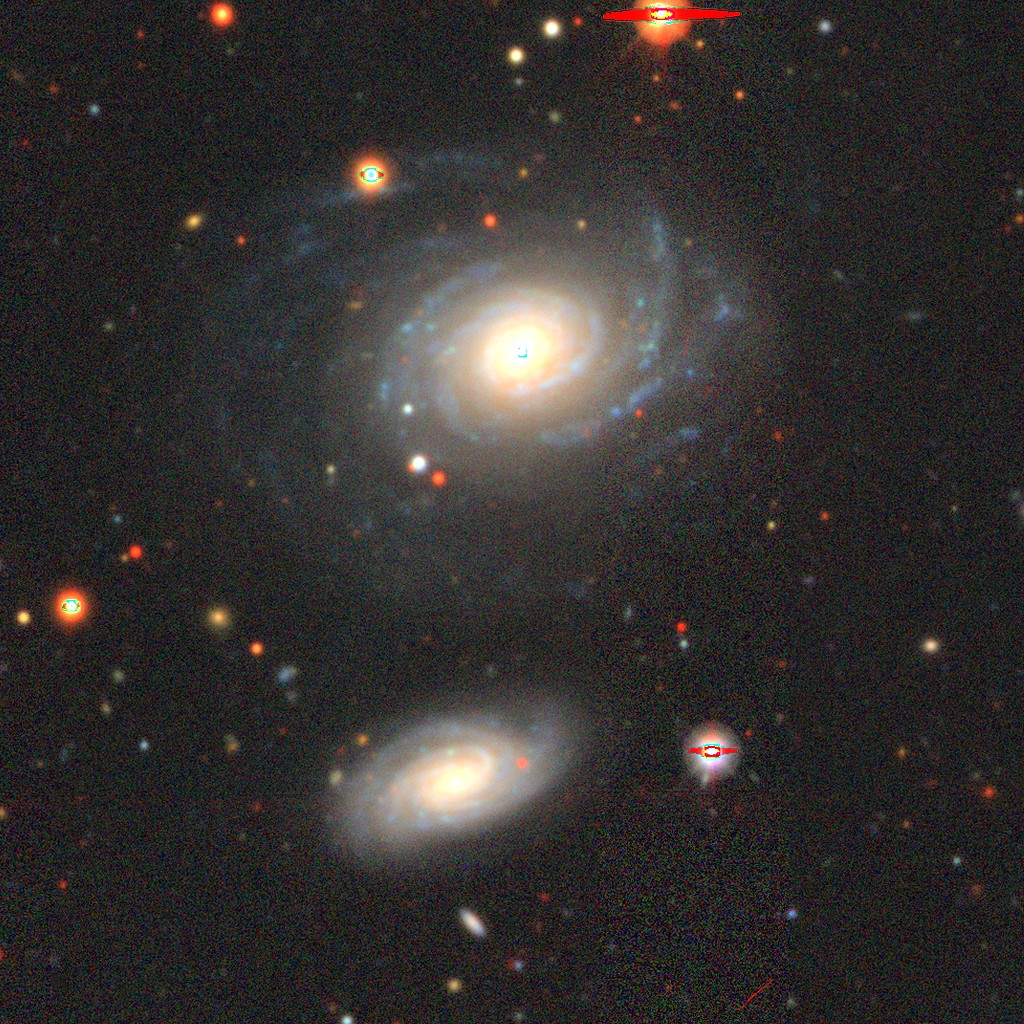
Hoyle had some good reasons to make the strong statement that he did. For one, the most distant galaxies known at the time were only ~200 million light-years away, and appeared remarkably similar to the ones nearby; there was no galaxy evolution detectable. For another, there was no background of low-energy radiation that had ever been detected; in 1949, it was a prediction without evidence. And when it came to the last point — the origin of the light elements — Hoyle was convinced that stars were an absolute requirement for making these elements, and that there was no way the Big Bang could have produced any of them at all.
To prove his case, Hoyle made a breathtaking prediction. Reasoning that carbon exists, Hoyle had the idea that it would take three helium nuclei (with two protons and two neutrons apiece) to all meet together under extremely hot, dense conditions in order to create one carbon nucleus (with six protons and six neutrons). These conditions would be achievable inside the hottest stars, he reasoned, but sufficient amounts of carbon would only be produced if there was a new nuclear state for carbon — an excited state — that existed with precisely the energy that three ground-state helium nuclei, together, possessed.
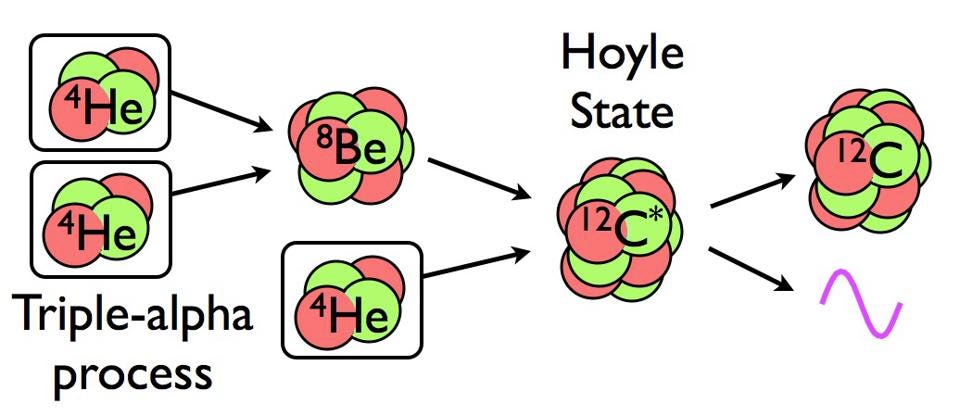
In the 1950s, nuclear physicist Willie Fowler actually found that excited state of carbon, which is now named the Hoyle state. (Fowler would be awarded a share of the 1983 Nobel Prize in Physics for his discovery.) Based on the evidence at the time, it looked like the steady-state cosmology was preferred, and that the Big Bang theory, while an elegant idea, simply didn’t match observations. In fact, Hoyle and Fowler, along with Geoffrey and Margaret Burbidge, would write the most important paper in the history of stellar nucleosynthesis, detailing the origin of the elements of the periodic table, from carbon on up.
But the story would rapidly change. Stars might provide the foundation for the heavy elements found in the Universe, but couldn’t explain the lighter elements and their isotope abundances, including hydrogen, deuterium, helium-3, helium-4, and lithium-7. With the discovery of the first quasars, galaxies were now being found billions of light-years away, and their properties, such as mass, morphology, and stellar age, really were different from modern-day galaxies. And in 1964, while testing out and calibrating the Holmdel Horn Antenna, scientists Arno Penzias and Bob Wilson accidentally stumbled upon the greatest piece of evidence of all: an all-sky glow of low-energy radiation, peaking at about 3 K above absolute zero.
Quite unexpectedly, they had serendipitously discovered the leftover radiation remaining from the Big Bang.

Over time, a more complete picture came into focus. The leftover glow of radiation was measured by many different instruments across a wide range of frequencies, and was determined to match the precise (blackbody) spectrum predicted by the Big Bang, proving that it could not have come from reflected starlight. Extremely pristine samples of gas and stars were found, with very few heavy elements in them from prior generations of stars, yet they still had the same fraction of deuterium, helium-3, helium-4, and lithium-7 as predicted by Big Bang nucleosynthesis. And the evolution of galaxies and the cosmic web has been demonstrated robustly. The three great predictions of the Big Bang were all validated observationally.
Being a scientist, you might expect that Hoyle would have changed his mind in the face of this overwhelming evidence. After all, a scientist changing their mind in the face of new evidence has been a hallmark of many of history’s greatest thinkers, going all the way back to Johannes Kepler. But it wasn’t to be. Hoyle would live out the rest of his days deriding the Big Bang model and lamenting how few people still attempted to oppose it. He thought the greatest puzzle of our time was this mysterious “fog” we lived in when referring to the Big Bang’s leftover background radiation, and kept modifying his steady-state theory in attempts to keep it alive. At last, in 2001 when he finally died, work on that alternative was abandoned.
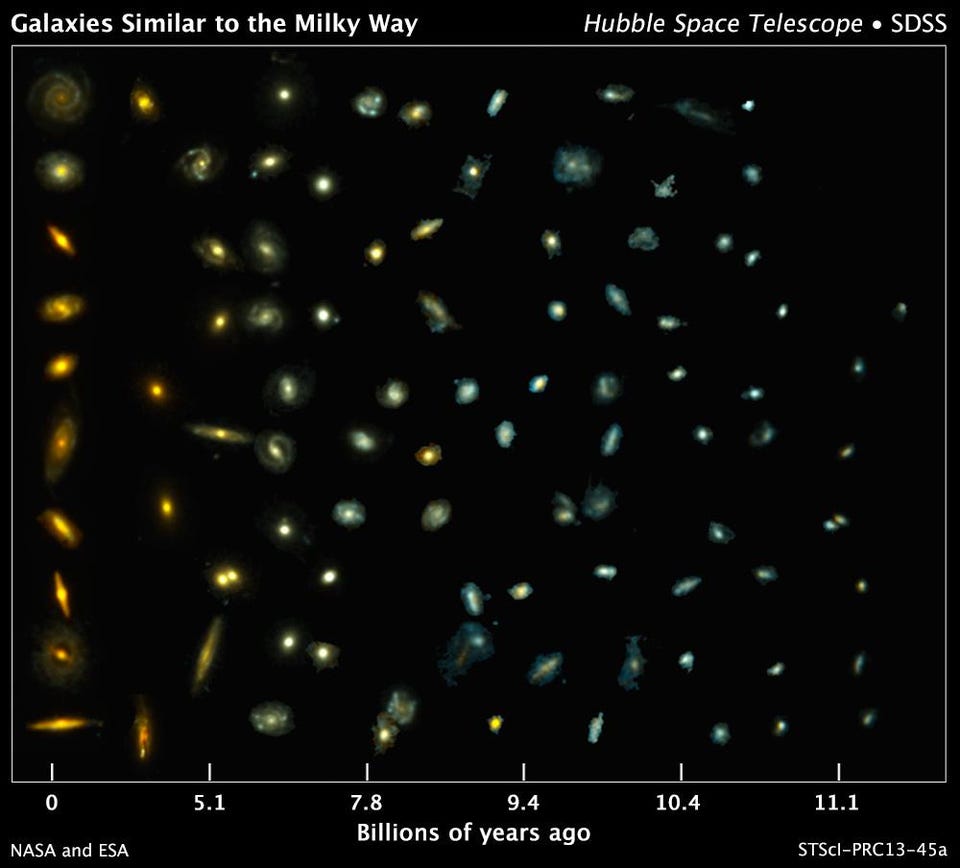
In the 2010s, indirect evidence for another great prediction of the Big Bang — the cosmic neutrino background — finally came in, revealing its imprint in both the cosmic microwave background and in the large-scale clustering of galaxies. Imperfections revealed in the cosmic microwave background provided the key evidence that the Big Bang wasn’t the absolute beginning of everything, but rather occurred only in the aftermath of a previous phase to the Universe: cosmic inflation. The initial idea for the Big Bang, dating back to the 1920s, was further fleshed out from the 1940s through the 1960s, and it was the discovery of the leftover glow of radiation from that event, today known as the cosmic microwave background (but originally called the much more epic-sounding Primeval Fireball), that provided what we generally consider to be the “smoking gun” evidence for it.
And yet, the name “Big Bang” itself came about not from anyone who worked on it or found the critical evidence for it, but rather from one of its greatest detractors: someone who made profoundly important contributions to science but could never bring himself to say those three little words that so many can never bring themselves to say, “I was wrong.” When the decisive evidence comes in, you have to follow it wherever it leads, no matter how uncomfortable it is for you, otherwise you’ve abandoned the very principle of science itself: that the Universe, and nature, itself is the only meaningful arbiter of what is scientifically true. Today, the Big Bang is an inextricable part of the scientific history of the cosmos we all share, and its name, perhaps ironically, is forever linked to the one person who rejected it more strongly than any other.
